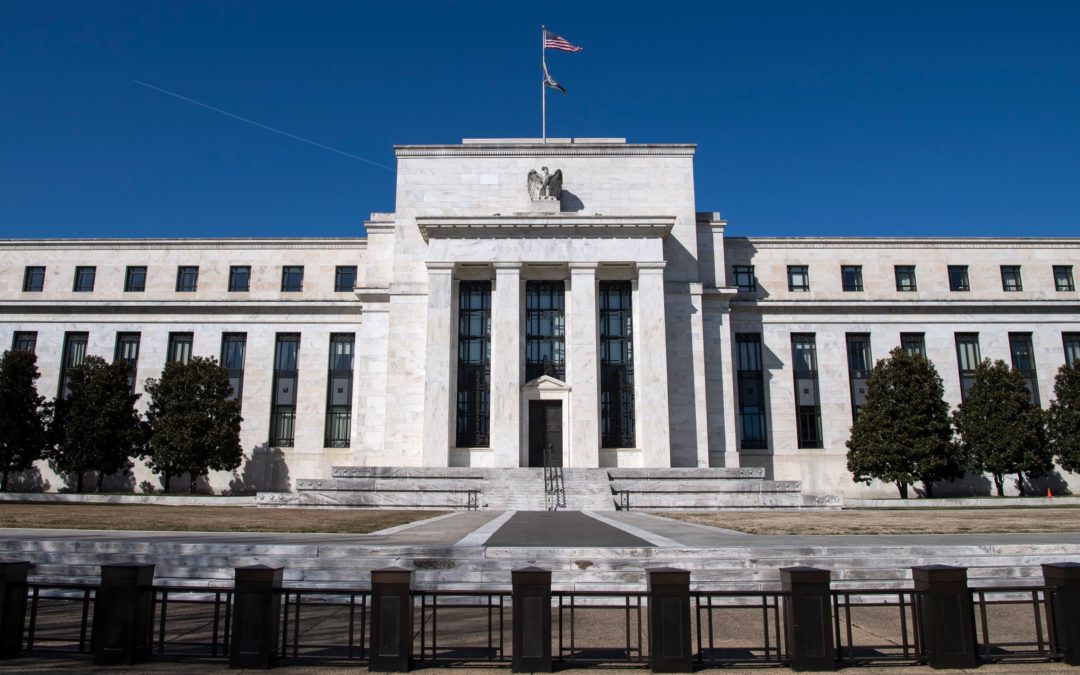The Fed Raises Rates… And The Markets Go Up?
One of the things we know, mathematically, is that if interest rates go up, stocks should go down. If you consider a stock price as the discounted present value of a future earnings stream, then a higher discount rate results in a lower present value. There is no nuance or context; it is just math. So when rates are raised—and prospects for future raises are reinforced—and yet stocks move up, there is clearly something else going on.
It is not just the short rates that the Fed controls either. Rates for the 10-year U.S. Treasury are up as well, although a bit off the highs. We will talk about that tomorrow. Any way you look at it, stocks should be lower.
What’s Going On?
If other things are equal, stocks would be dropping, but they aren’t. So, other things are not equal—the Fed’s announcement means something has changed. The interesting question is, what has changed, for the good, that warrants those higher prices? And how did the rise in interest rates send that signal?
Expectations. Let’s start with expectations. Markets don’t just trade against the news, but against what that news was expected to be. This is why a company can report much higher earnings and see the stock tank as those earnings (great as they may have been) were still below what the market expected. This tendency has been enshrined in the saying “buy the rumor and sell the news.” The converse applies, and this can be seen as investors sold the market in fear of the Fed meeting and bought on the actual news. This is almost certainly part of the answer: a simple market overreaction and subsequent recovery.
A change in expectations. The other big part of the answer is there really has been a change in expectations. What the Fed is signaling with the rate increases is that, despite everything, it still expects growth to continue. With worries about Covid-19, about the Ukraine war, about inflation, and about everything else, the Fed is still confident enough in the U.S. economy that it will not only raise rates now but publicly plan to keep doing so. Remember, this is the first rate hike in years, as the Fed hasn’t felt secure enough that a rate increase might stop the expansion. As such, it is a big vote of confidence in the economy and the markets.
History Sides with the Fed
History is on the Fed’s side here. The economy and the markets have historically continued to improve through the first several rate hikes. If that holds, which the data shows it should, we should see continued and quite possibly even faster growth over the next several quarters. That will result in faster earnings growth and, other things being equal, higher stock prices. That positive signal seems to be outweighing the negative math.
Positive Signs
This is another in a series of somewhat unexpected positive developments. On the whole, for all the fears, the market seems to be discounting the effects of the Ukraine war. It seems to be discounting the effects of the Fed rate increases. It seems to be discounting the effects of another possible Covid wave. A lot of bad news seems to already be in the price, as we are seeing very different reactions to bad news than we might have.
And if that is the case? It is a very positive sign for the next several months.
© 2022 Commonwealth Financial Network®
© Axial Financial Group. All Rights reserved. 5 Burlington Woods, Suite 102 Burlington, Massachusetts
Disclosure: Certain sections of this commentary contain forward-looking statements based on our reasonable expectations, estimates, projections, and assumptions. Forward-looking statements are not guarantees of future performance and involve certain risks and uncertainties, which are difficult to predict. Past performance is not indicative of future results. Diversification does not assure a profit or protect against loss in declining markets. All indices are unmanaged and investors cannot invest directly into an index. The Dow Jones Industrial Average is a price-weighted average of 30 actively traded blue-chip stocks. The S&P 500 Index is a broad-based measurement of changes in stock market conditions based on the average performance of 500 widely held common stocks. The Nasdaq Composite Index measures the performance of all issues listed in the Nasdaq Stock Market, except for rights, warrants, units, and convertible debentures. The MSCI EAFE Index is a float-adjusted market capitalization index designed to measure developed market equity performance, excluding the U.S. and Canada. The MSCI Emerging Markets Index is a market capitalization-weighted index composed of companies representative of the market structure of 26 emerging market countries in Europe, Latin America, and the Pacific Basin. It excludes closed markets and those shares in otherwise free markets that are not purchasable by foreigners. The Bloomberg Barclays Aggregate Bond Index is an unmanaged market value-weighted index representing securities that are SEC-registered, taxable, and dollar-denominated. It covers the U.S. investment-grade fixed-rate bond market, with index components for a combination of the Bloomberg Barclays government and corporate securities, mortgage-backed pass-through securities, and asset-backed securities. The Bloomberg Barclays U.S. Corporate High Yield Index covers the USD-denominated, non-investment-grade, fixed-rate, taxable corporate bond market. Securities are classified as high-yield if the middle rating of Moody’s, Fitch, and S&P is Ba1/BB+/BB+ or below.




